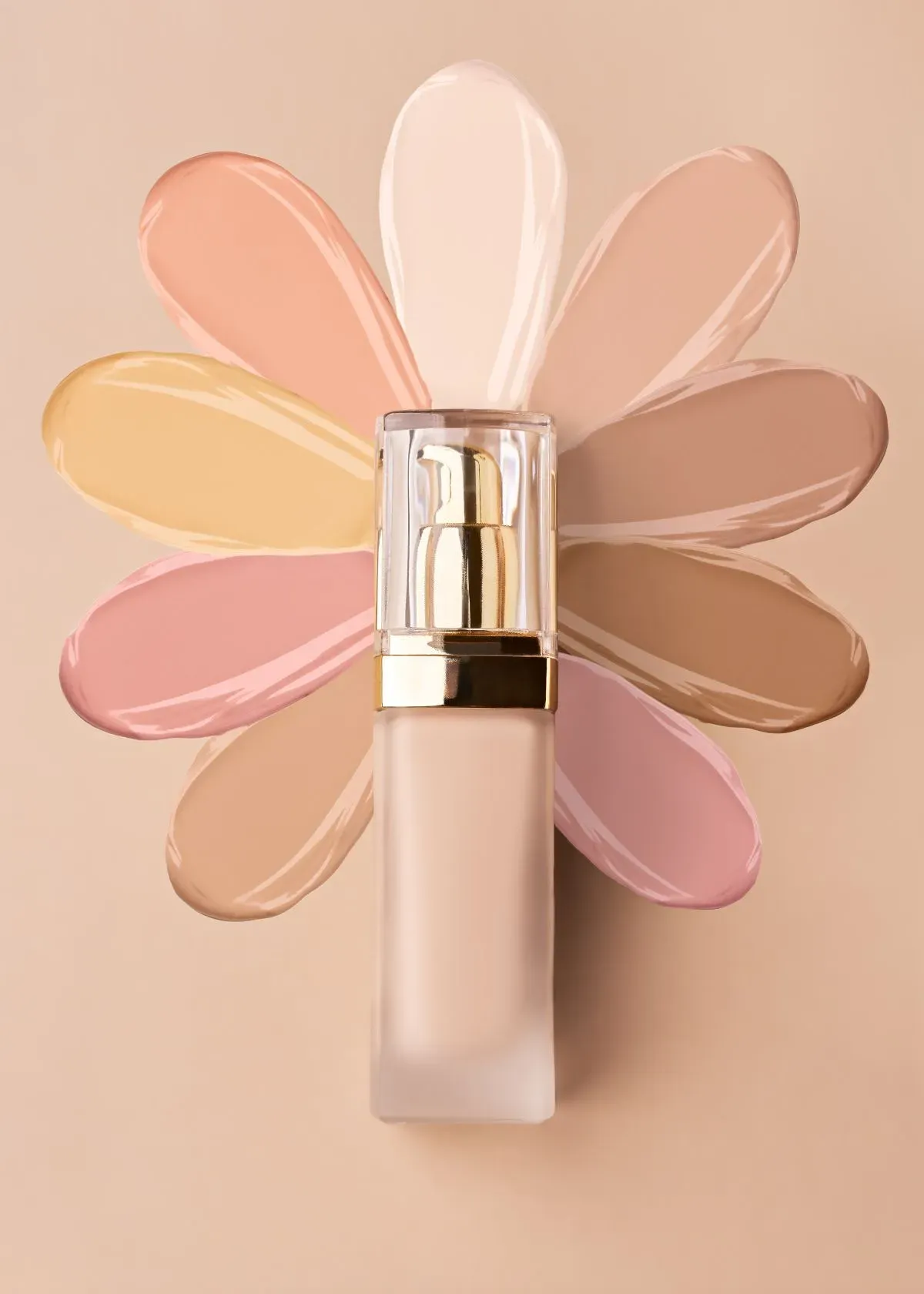To apply a water-based foundation, start with a clean and moisturized face, then use a brush or sponge for smooth coverage as part of your makeup routine. Water-based foundation is your best call if you are exhausted from using thick foundations that leave your skin gasping for breath.
If you're searching for a lighter touch, something to nourish and respect those delicate pores, know that you are not alone. I've shuffled down the same path, wading through endless beauty blogs and critiques to pursue the holy grail of makeup. Amidst it emerged a champion: a water-based foundation.
Imagine it as hydration liberation for your thirsty skin – its featherlight essence could be the key to unlocking your radiance. This quest isn't born out of mere curiosity—it's personal.
Struggling to find that supportive foundation instead of one that feels like an unwelcome mask led me deep into the world of water-based wonders. Because knowing is half the battle in crafting our beauty narratives, let this article serve as your blueprint to master this breezy alternative effortlessly so you can easily embody flawless yet undetectable coverage.
From nurturing your skin’s natural glow to perfecting those finishing touches, prepare yourself for an uplifted makeup journey! Stay tuned—there’s savvy beauty tips here tailored just for you.
- Cleanse, moisturize, and prime your skin before applying a water-based foundation to ensure a smooth base for even coverage.
- Choose a foundation that matches your skin tone and is suitable for your skin type, whether oily, dry, or sensitive.
- Apply the foundation with fingers, sponge, or brush, starting with a small amount, and blend outwards from the center of the face to avoid harsh lines.
- Use concealer or powder on top of the foundation to cover any blemishes or imperfections for a flawless finish.
- At day's end, gently remove your makeup with a remover designed for faces and set your look with setting spray to make it last all day.
Preparing Your Skin for Foundation Application
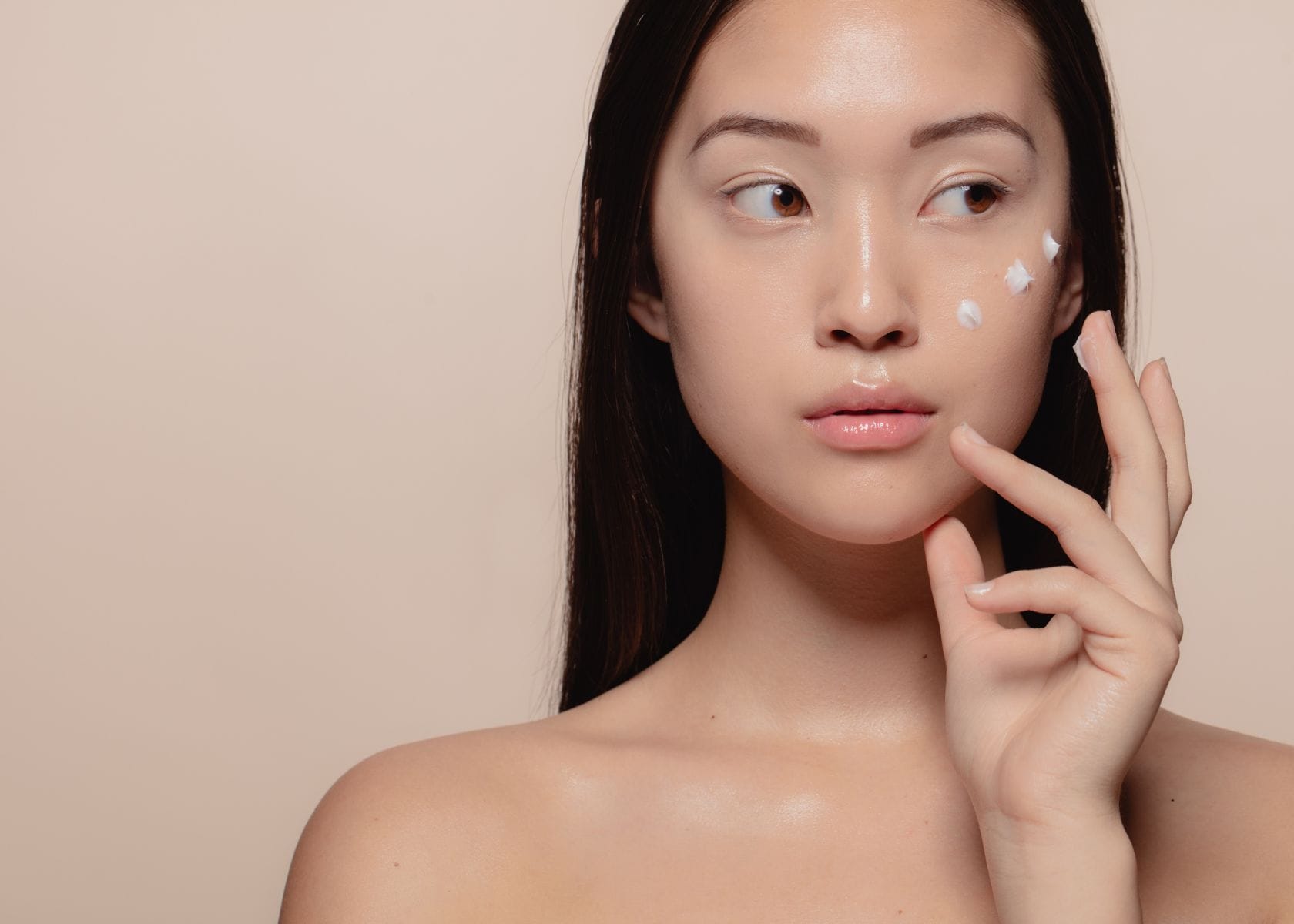
Before applying a water-based foundation, it's important to prepare your skin properly. This includes cleansing your face, applying moisturizer, and using a primer to create a smooth canvas for the foundation.
Cleanse your face
Each time I'm about to apply my water-based foundation, I make sure my canvas—my face—is pristine. Gently washing with a mild cleanser removes all traces of dirt and oil, ensuring the foundation glides smoothly for a flawless complexion.
Patting the skin dry rather than rubbing ensures that you don't cause any irritation before moving on to moisturizing.
I take care not to use hot water as this can strip away natural oils; lukewarm is best for maintaining healthy skin balance. This step sets the stage for an even and enduring makeup application, which is crucial when aiming for that perfect finish using beauty products like liquid foundation.
It's tempting to rush through cleansing, but taking the extra minute here makes all the difference in how makeup performs throughout the day.
Apply moisturizer
After cleansing my face, the next step is to apply moisturizer. I should choose a moisturizer that suits my skin type and provides hydration without feeling heavy or greasy. This will help create a smooth base for the foundation and prevent it from clinging to any dry patches.
Next, I gently massage the moisturizer into my skin using upward motions until fully absorbed. It's essential to allow a few minutes for the moisturizer to set before applying primer and then a water-based foundation, helping everything blend seamlessly.
By doing this, I can ensure that my skin is prepped and ready for flawless makeup application.
Use a makeup primer
Before applying my water-based foundation, I ensure to use a primer. This step is essential as it helps to create a smooth base for the foundation, allowing it to adhere better and last longer throughout the day.
The primer also helps minimize the appearance of pores and fine lines before I apply liquid foundation, giving my skin a flawless finish. Using a small amount of primer all over my face after moisturizing ensures that my water-based foundation goes on evenly and stays put for hours.
Applying a pea-sized amount of primer is sufficient; this will help create an even canvas for the foundation without feeling heavy on the skin. Additionally, using a primer with hydrating properties further complements the benefits of a water-based foundation, providing extra moisture and radiance to my skin.
Choosing the Right Water-Based Foundation
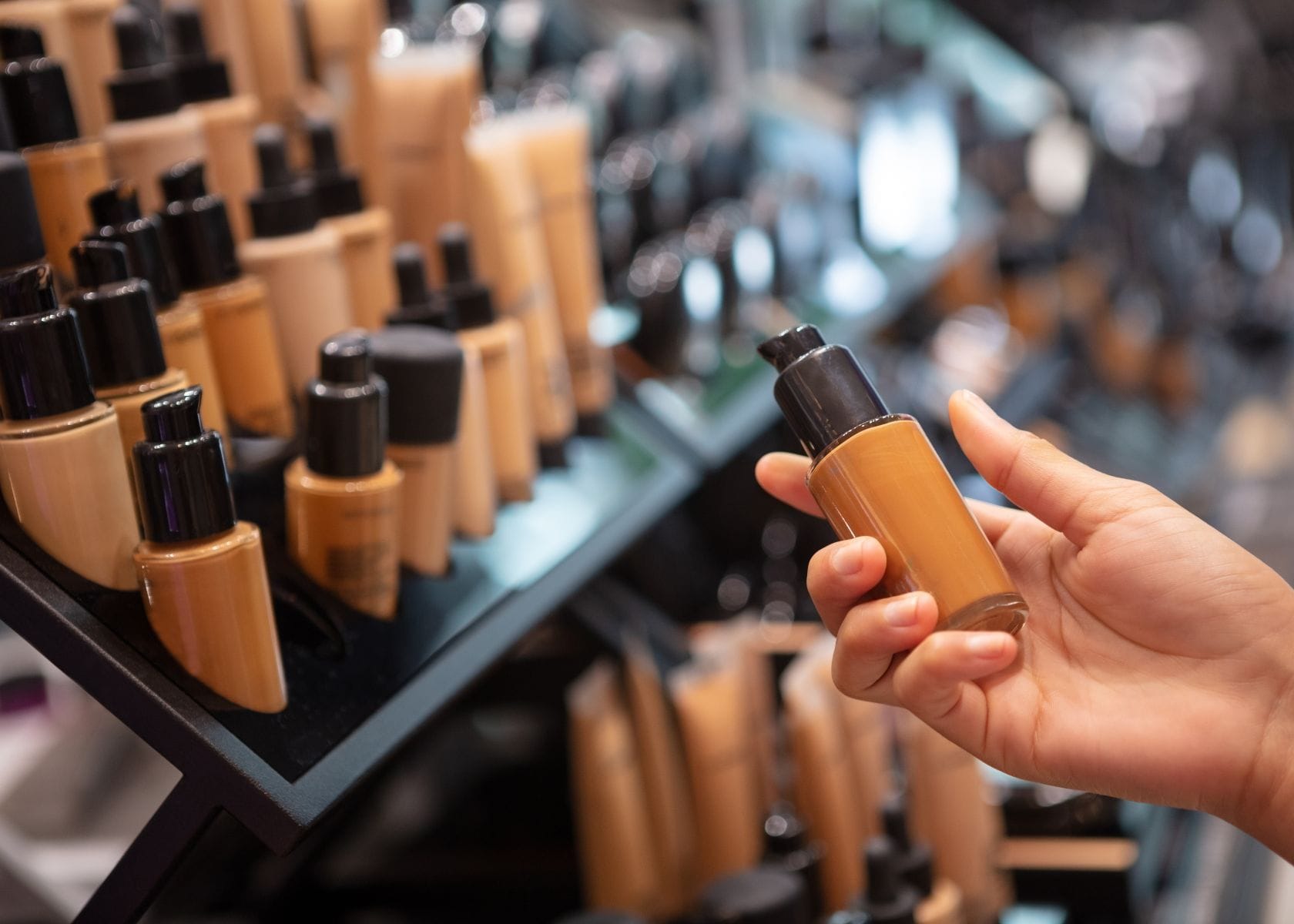
When choosing a water-based foundation, it's important to match your skin tone and consider your skin type for the best results. Finding a formula that works well with your specific skincare needs is also essential.
Match your skin tone
To achieve a flawless look, it's crucial to match your water-based foundation with your skin tone. Understanding the undertone of your skin is essential. Look for warm, cool, or neutral shades to match your undertone.
If you have fair skin, choose a light shade, and if you have medium to dark-toned skin, opt for deeper tones that complement your complexion.
An important point to remember is that testing on the jawline instead of the back of your hand allows for better color matching as it closely resembles the natural color of your face.
Consideration should also be given to finding a foundation that matches and blends seamlessly with your skin type. Whether you have dry, oily, or combination skin, selecting a water-based foundation that caters to your specific needs can enhance both the finish and longevity of your makeup application.
Consider your skin type
When choosing a water-based foundation, it's essential to consider your skin type. If you have oily skin or acne-prone skin, look for oil-free and non-comedogenic formulas that won't clog pores.
Water-based foundations are ideal for combination or dry skin as they provide a hydrating and lightweight option, offering a natural and dewy finish. Individuals with sensitive skin may also benefit from water-based foundations due to their gentle and soothing properties.
Understanding your skin type will help you select the perfect water-based foundation that meets your needs. For those with oily or acne-prone skin, look for water-based foundations formulated specifically to control excess oil while maintaining hydration.
If you have combination or dry skin, opt for hydrating water-based foundations that offer moisture without feeling heavy on the skin.
Applying Foundation with Different Tools
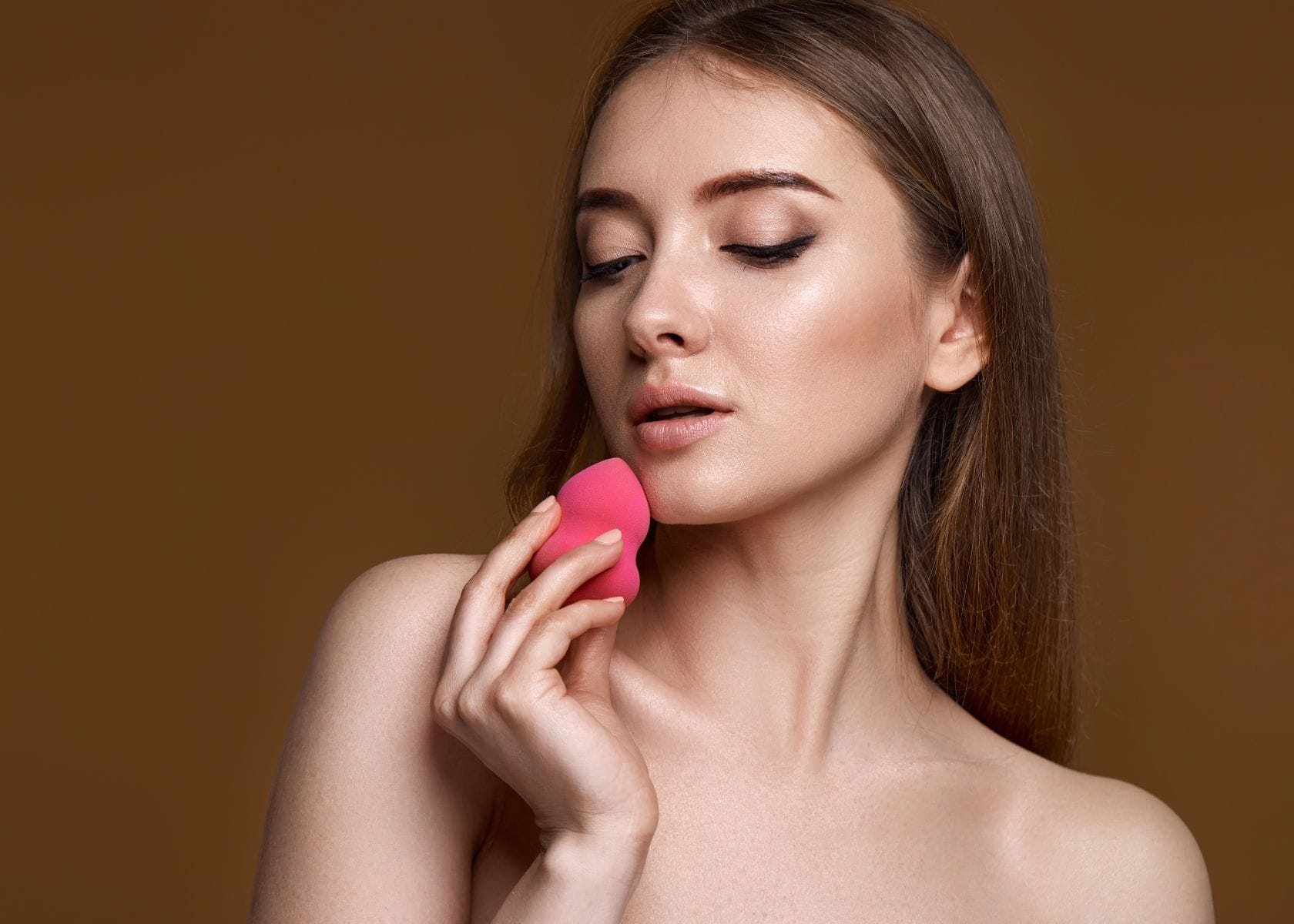
I prefer using my fingers, a sponge, or a brush to apply a water-based foundation for different coverage and finish. Each tool gives a different result, so finding the best one for your desired look is important.
Using your fingers
I start by applying a small amount of water-based foundation onto the back of my hand. Then, I spread the product gently around my skin with my fingers, ensuring even coverage. Next, I blend it outwards for a seamless finish.
Applying foundation with my fingers allows me to warm up the product slightly before application and gives me more control over how much product is used in each area.
It’s also an excellent way to achieve a natural and lightweight look, especially for those who prefer minimal makeup - and any celebrity makeup artist would vouch for this trick.
Using a sponge
I dab just the right amount of water-based foundation onto the back of my hand. Then, I pick up the product with a makeup sponge. Using the sponge or beauty blender, I gently dab the foundation onto my skin in small, bouncing motions for an even and natural finish.
The soft texture of the sponge helps blend the foundation seamlessly without leaving streaks or brush marks on my skin. For areas that require more coverage, I build up the foundation by patting an extra layer with the sponge until I achieve the desired result.
After applying foundation to my entire face, I use a clean, damp sponge to press lightly over any areas where the product has settled into fine lines or creases, ensuring a smooth and flawless look.
Using a foundation brush
Using a brush allows for precise application and seamless blending of water-based foundation. I recommend starting at the center of your face and blending outward using gentle strokes.
A dense, flat-top brush is ideal for achieving even coverage and natural beauty. It buffs the foundation into the skin, ensuring a natural finish.
Additionally, when using a brush, it's important to build up coverage gradually by applying multiple thin layers rather than one thick layer. This technique helps avoid cakey or streaky results while offering customizable coverage based on personal preference.
Tips and Techniques for a Flawless Application
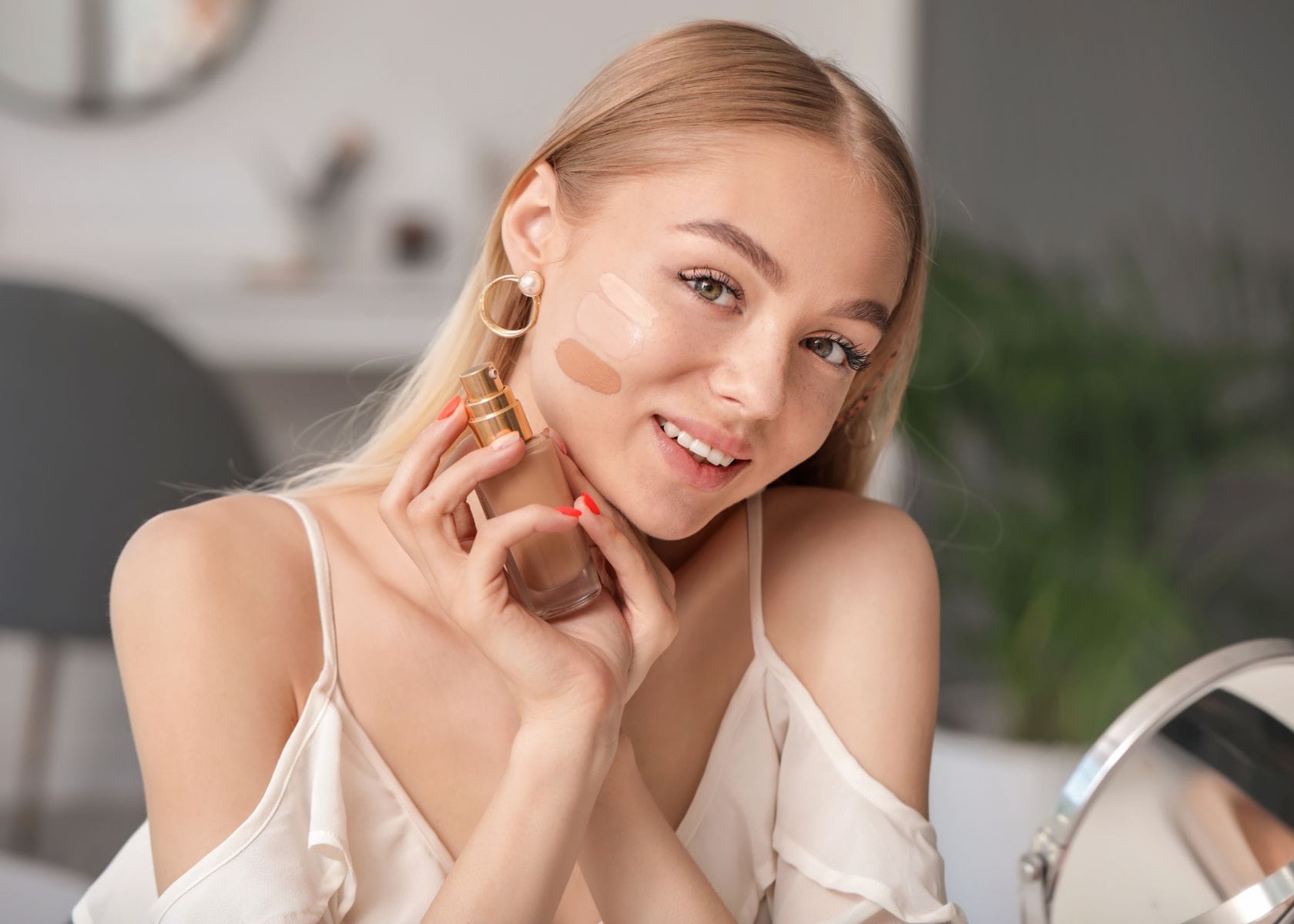
Start with a small foundation and blend outwards for a natural finish. For more expert advice on applying water-based foundation, keep reading to perfect your makeup routine.
Start with a small amount of foundation
Begin with a light application of a water-based foundation shade; adding more if needed is easier. Apply small dots on the forehead, cheeks, and chin before blending outwards for even coverage.
This technique prevents an overly heavy look and helps achieve a natural finish.
Using minimal product at first ensures that the makeup blends seamlessly into the skin. Starting with a small amount gives you better control over coverage and can build up as necessary without cakiness or uneven patches.
Blend outwards
To achieve a seamless finish when applying water-based foundation, blending outwards from the center of your face is crucial. This technique ensures even coverage and avoids any harsh lines or boundaries.
I start by applying small dots of foundation to the center of my cheeks, forehead, and chin before blending them out towards the edges of my face using a stippling brush or sponge. Blending outwards ensures that the foundation seamlessly integrates with my skin for a natural look.
I use gentle outward strokes in all directions to avoid streaks or uneven patches when blending outwards. It's important not to forget about areas like the jawline and hairline when blending outward to maintain a consistent look across the entire face.
Use concealer or powder to cover blemishes
After blending outwards and achieving a seamless foundation application, the next step is to address any blemishes or imperfections on the skin. A concealer or powder can effectively cover these areas for a flawless finish.
For those with specific spots that need extra coverage, a creamy concealer in the shade matching your foundation can be lightly tapped onto the blemish using clean fingers or a small brush.
Alternatively, if you have larger areas of concern, such as redness or discoloration, applying a color-correcting concealer before your regular concealer can help neutralize the imperfection.
Frequently Asked Questions
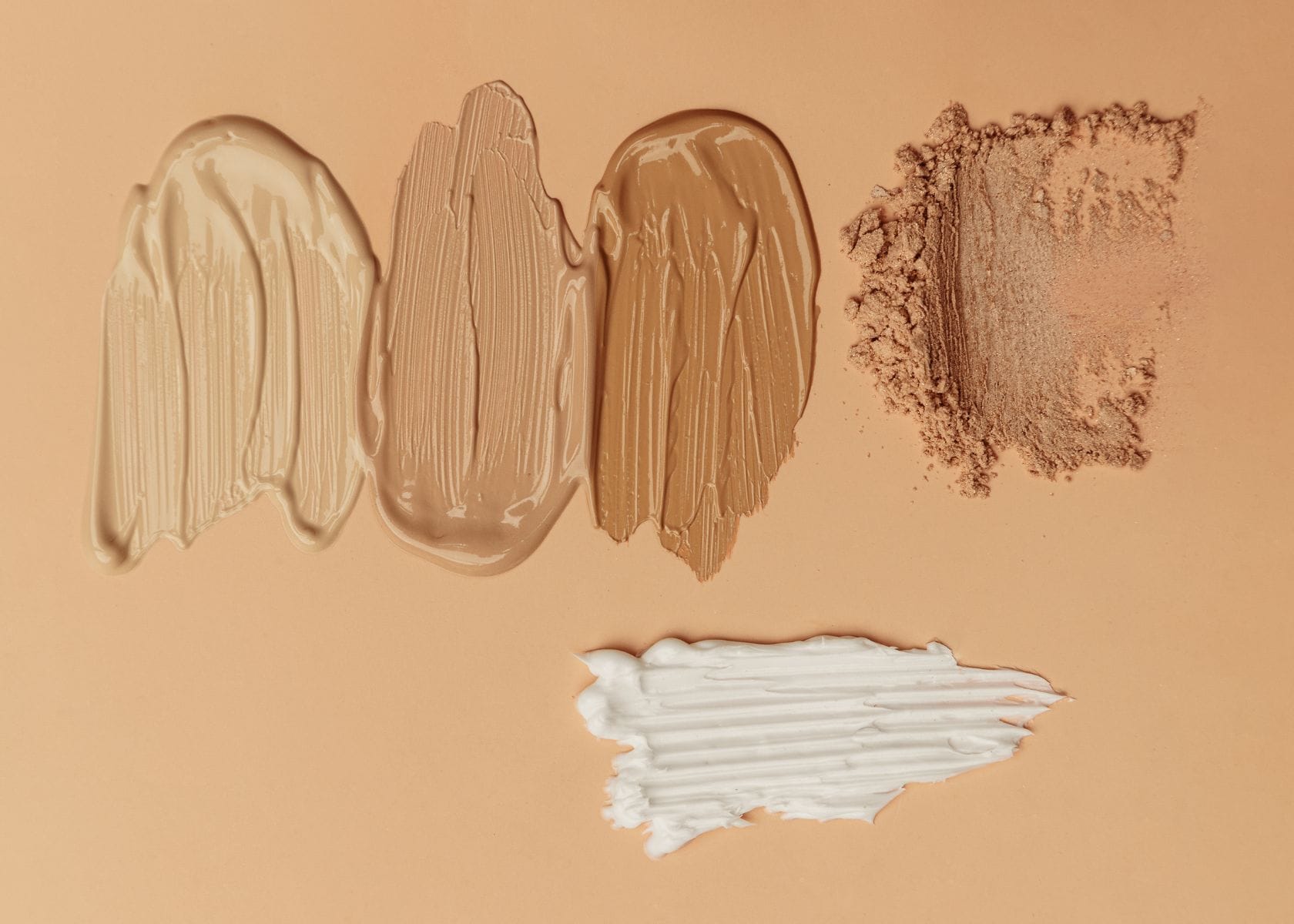
I hope I pretty much covered everything in detail about how to apply foundation, however, if you have more questions, here's an overview.
What are some makeup tips for using a water-based foundation?
For best results with water-based foundations, use gentle dabbing motions rather than rubbing to blend it seamlessly into your skin.
Why should I include the water-based foundation in my skincare regimen?
Water-based foundations are light on the skin and can provide a natural look, making them an excellent choice for daily wear within your skincare routine.
Are there specific makeup techniques for applying different kinds of foundations?
Yes, each type of foundation requires unique techniques. However, when applying water-based foundation specifically, ensure even application and consistent blending for a flawless finish. If you are not very adept with fingers, try to use makeup brushes instead as a beauty tool.
Conclusion
We've covered key steps for applying water-based foundation, from skin preparation to flawless application techniques. These practical tips are simple to implement and can provide a seamless and radiant makeup finish.
Have you tried incorporating these methods into your foundation routine? What new strategies will you apply to enhance your makeup game? Choosing the right foundation cannot be understated – it can significantly impact your overall look.
If you have more questions about applying liquid foundation for flawless skin and full coverage, write to us or leave a comment below.
References
- Fulton, J. E., et al. (1984). Comedogenicity of current therapeutic products, cosmetics, and ingredients in the rabbit ear [Abstract].
https://www.jaad.org/article/S0190-9622(84)80050-X/pdf - Yan, Y., Lee, J., Hong, J., & Suk, H. (2020). Measuring and describing the discoloration of liquid foundation. Color Research and Application, 46(2), 362–375. https://doi.org/10.1002/col.22584
Learn More About Foundations
